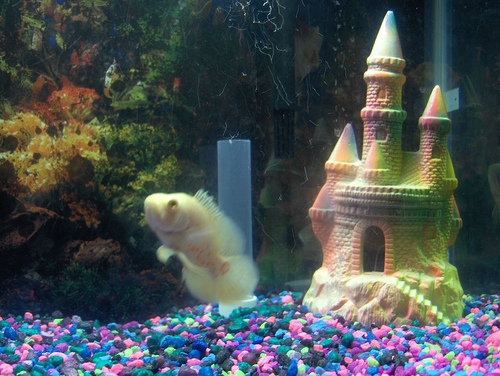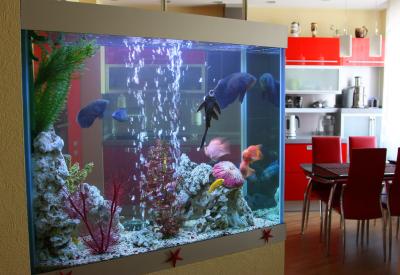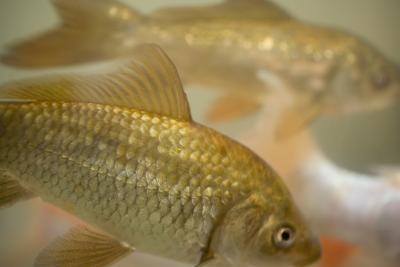
If you decide not to breed your fish in a community or species setup, you will need at least one extra tank and probably two or more (sometimes many more!) in order to spawn the adults and raise the fry.
The size of the spawning (or breeding) tank you choose should depend on the species you're trying to breed, taking into account not just the size of the fish but its breeding habits and the swimming room it requires. (Fast-moving species generally need larger tanks than equivalently-sized slow swimmers, for instance.) Regardless of size, tanks that are low and wide (such as a 20- or 30-gallon long) make better breeding tanks than tall, narrow show tanks, because they permit more gas exchange at the water's surface. Breeding tanks should also have covers, since fish often chase one another vigorously while courting, and have been known to jump out of uncovered tanks.
Sometimes also referred to as grow-out tanks, these are essentially nurseries for fry. Like human infants, baby fish are far more sensitive to environmental conditions than their adult counterparts, and keeping them in a separate tank allows you to more precisely control the quality of their water. (It also protects them from adult fish that might eat them.) In rearing tanks, bigger is not always better, at least in the first week or two after fry become free swimming, since in very large tanks it is sometimes difficult for them to track down food. Many breeders start fry out in a small tank-or even mason jars, for the tiniest fry-and move them to larger quarters as they grow.
If you are raising more than a handful of fry, you are likely to need multiple rearing tanks, since a 10-gallon aquarium that can handle 100 two-day-old fry will be able to fit only a fraction of that number by the time those same fry are two months old. (If you live in a small apartment with little free space for tanks, you might want to consider breeding some of the less-prolific fish!) Rearing tanks usually have bare bottoms to make it easier to siphon out fish waste and leftover food, and rarely have plants or decor, but they should have covers, especially if you're raising anabantoids; if the air at the surface of the water isn't warm and moist, the labyrinth organs of the fry may be damaged.
 How to Make a Salt Water Fish Tank
How to Make a Salt Water Fish Tank
How
How to Make a Salt Water Fish Tank
How to Make a Salt Water Fish Tank
How
 List of Aggressive Tropical Freshwater Fish
List of Aggressive Tropical Freshwater Fish
List of Aggressive Tropical Freshwater Fish
List of Aggressive Tropical Freshwater Fish
 What Do Feeder Fish Eat?
What Do Feeder Fish Eat?
What Do Feede
What Do Feeder Fish Eat?
What Do Feeder Fish Eat?
What Do Feede
 How to Take Care of a Puffer Fish
How to Take Care of a Puffer Fish
How
How to Take Care of a Puffer Fish
How to Take Care of a Puffer Fish
How
 Why are there so Many More Shark Attacks?
In 2004 16 year old, J.P And
Why are there so Many More Shark Attacks?
In 2004 16 year old, J.P And
Copyright © 2005-2016 Pet Information All Rights Reserved
Contact us: www162date@outlook.com